typhoid fever
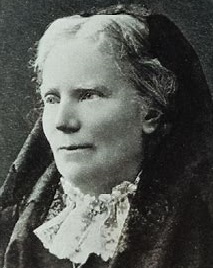 In the mid-1800s, it was unheard of for a woman to be a doctor. They were barely allowed to be a nurse, although they were somehow expected to be able to do all the “nursing” duties for their own family. Elizabeth Blackwell was born February 3, 1821 and she was about to change things forever. She first became a physician in England, and then she became the first woman to receive a medical degree in the United States, and the first woman on the Medical Register of the General Medical Council. I’m not a big “women’s libber,” but sometimes women need to decide what they want to do in life, and go for it. Elizabeth Blackwell played an important role in both the United States and the United Kingdom as a social awareness and moral reformer. She promoted education for women in medicine.
In the mid-1800s, it was unheard of for a woman to be a doctor. They were barely allowed to be a nurse, although they were somehow expected to be able to do all the “nursing” duties for their own family. Elizabeth Blackwell was born February 3, 1821 and she was about to change things forever. She first became a physician in England, and then she became the first woman to receive a medical degree in the United States, and the first woman on the Medical Register of the General Medical Council. I’m not a big “women’s libber,” but sometimes women need to decide what they want to do in life, and go for it. Elizabeth Blackwell played an important role in both the United States and the United Kingdom as a social awareness and moral reformer. She promoted education for women in medicine.
Strangely, Blackwell was not interested in a career in medicine at first. In fact, when her schoolteacher brought in a bull’s eye to use as a teaching tool, Blackwell found that she didn’t feel so well. So, initially, she became a schoolteacher in order to support her family. Teaching school was one of the few “acceptable” occupations for women during the 1800s. Unfortunately for her, she hates every minute of teaching, but she found that medicine and medical subjects did interest her.
Her interest in medicine began after a friend fell ill and told her that, if a female doctor had cared for her, she 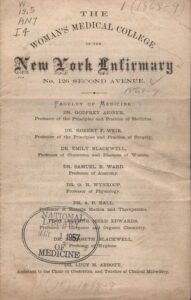 might not have suffered so much. Blackwell decided then and there that she would go to medical school. She began applying to medical schools and immediately found out that there was a prejudice against women students of medicine. In fact, there was no such thing, and the school and other students intended to keep it that way. That prejudice against her gender would persist throughout her career, but it did not stop her.
might not have suffered so much. Blackwell decided then and there that she would go to medical school. She began applying to medical schools and immediately found out that there was a prejudice against women students of medicine. In fact, there was no such thing, and the school and other students intended to keep it that way. That prejudice against her gender would persist throughout her career, but it did not stop her.
She was rejected from every medical school she applied to, except Geneva Medical College, currently known as State University of New York Upstate Medical University. Amazingly, her acceptance came after the male students voted for her acceptance. And so it was that in 1847, Elizabeth Blackwell became the first woman to attend medical school in the United States. Her inaugural thesis on typhoid fever was published in 1849 in the Buffalo Medical Journal, shortly after she graduated. It was the first medical article ever published that had been written by a woman female student from the United States. In what was considered a perspective that was deemed by the medical community as feminine, the thesis “portrayed a strong sense of empathy and sensitivity to human suffering, as well as strong advocacy for economic and social justice.”
In 1857, Elizabeth Blackwell founded the New York Infirmary for Women and Children with her sister Emily Blackwell, and began giving lectures to female audiences on the importance of educating girls. She also played a significant role during the American Civil War by organizing nurses. Her contributions remain celebrated with the Elizabeth Blackwell Medal, which is awarded annually to a woman who has made significant contribution to 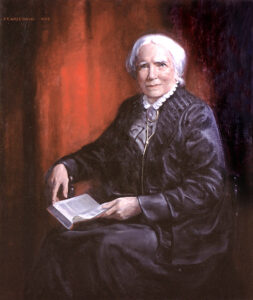 the promotion of women in medicine. Blackwell remained active even into her later years. In 1895, she published her autobiography, Pioneer Work in Opening the Medical Profession to Women. It was not very successful, selling less than 500 copies. After this publication, Blackwell slowly relinquished her public reform presence, and spent more time traveling. She visited the United States in 1906 and took her first and last car ride.
the promotion of women in medicine. Blackwell remained active even into her later years. In 1895, she published her autobiography, Pioneer Work in Opening the Medical Profession to Women. It was not very successful, selling less than 500 copies. After this publication, Blackwell slowly relinquished her public reform presence, and spent more time traveling. She visited the United States in 1906 and took her first and last car ride.
While holidaying in Kilmun, Scotland in 1907, Blackwell fell down a flight of stairs, and was left almost completely mentally and physically disabled. On May 31, 1910, she died at her home in Hastings, Sussex, after suffering a stroke that paralyzed half her body. Her ashes were buried in the graveyard of Saint Munn’s Parish Church, Kilmun, and obituaries honoring her appeared in publications such as The Lancet and The British Medical Journal.
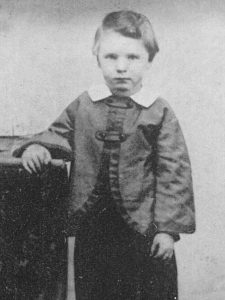 When we think of the White House, we seldom think of death. Oh, there have been presidents who were assassinated, or died while in office, but mostly not in the White House. It is too well guarded, and an ill president usually was taken to a hospital. Nevertheless, death has visited the White House, and the case I am referring to was not a president, but rather his son. Abraham Lincoln is my 7th cousin thrice removed, making his children, my 7th cousins 4 times removed. Lincoln married Mary Todd on November 4, 1842, in Springfield, Illinois. They were the parents of four sons Robert Todd Lincoln was born in 1843 and Edward Baker “Eddie” Lincoln in 1846. Edward died on February 1, 1850, in Springfield, probably of Tuberculosis. William Wallace “Willie” Lincoln was born on December 21, 1850, and died of a Typhoid Fever on February 20, 1862. The Lincolns’ fourth son, Thomas “Tad” Lincoln, was born on April 4, 1853, and died of heart failure at the age of 18 on July 16, 1871. While three of the four boys died in childhood, only one, Willie passed away in the White House.
When we think of the White House, we seldom think of death. Oh, there have been presidents who were assassinated, or died while in office, but mostly not in the White House. It is too well guarded, and an ill president usually was taken to a hospital. Nevertheless, death has visited the White House, and the case I am referring to was not a president, but rather his son. Abraham Lincoln is my 7th cousin thrice removed, making his children, my 7th cousins 4 times removed. Lincoln married Mary Todd on November 4, 1842, in Springfield, Illinois. They were the parents of four sons Robert Todd Lincoln was born in 1843 and Edward Baker “Eddie” Lincoln in 1846. Edward died on February 1, 1850, in Springfield, probably of Tuberculosis. William Wallace “Willie” Lincoln was born on December 21, 1850, and died of a Typhoid Fever on February 20, 1862. The Lincolns’ fourth son, Thomas “Tad” Lincoln, was born on April 4, 1853, and died of heart failure at the age of 18 on July 16, 1871. While three of the four boys died in childhood, only one, Willie passed away in the White House.
Disease was a scary thing in those days, because many serious diseases, which we have cures for now, were a death sentence in those days. Little Willie Lincoln had contracted Typhoid Fever. Typhoid fever, also known simply as typhoid, is a bacterial infection due to Salmonella Typhi that causes symptoms which may vary from mild to severe and usually begin six to thirty days after exposure. The disease was all over Washington DC, and 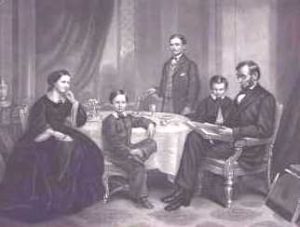 even the White House was not safe from it’s deathly grip. In fact, Willie was not the only one to have it. His brother, Tad was in bed just down the hall, with the same illness. Tad would survive, but I have to wonder if his heart was not severely weakened by the disease, because he passed away just nine years later of heart failure. On February 20, 1862, little 11 year old Willie succumbed to the Typhoid Fever at 5:00pm. His parents were with him, and Abraham Lincoln said, “My poor boy, he was too good for this earth. God has called him home. I know that he is much better off in heaven, but then we loved him so. It is hard, hard to have him die!” Mary watched him bury his head in his hands, “his tall frame convulsed with emotion.” At the foot of the bed she stood “in silent, awe-stricken wonder,” marveling that so rugged a man could be so moved. “I shall never forget those solemn moments — genius and greatness weeping over love’s idol lost.” President Lincoln then walked down the hall to his secretary’s office. He startled the half-dozing secretary with the news: “Well, Nicolay, my boy is gone — he is actually gone!” John Nicolay recalled seeing his boss burst into tears before entering his own office. I think I have to agree with Mary. When we think of Abraham Lincoln, we think of a strong man, but if we think about it, he also had a softer side, and he loved children.
even the White House was not safe from it’s deathly grip. In fact, Willie was not the only one to have it. His brother, Tad was in bed just down the hall, with the same illness. Tad would survive, but I have to wonder if his heart was not severely weakened by the disease, because he passed away just nine years later of heart failure. On February 20, 1862, little 11 year old Willie succumbed to the Typhoid Fever at 5:00pm. His parents were with him, and Abraham Lincoln said, “My poor boy, he was too good for this earth. God has called him home. I know that he is much better off in heaven, but then we loved him so. It is hard, hard to have him die!” Mary watched him bury his head in his hands, “his tall frame convulsed with emotion.” At the foot of the bed she stood “in silent, awe-stricken wonder,” marveling that so rugged a man could be so moved. “I shall never forget those solemn moments — genius and greatness weeping over love’s idol lost.” President Lincoln then walked down the hall to his secretary’s office. He startled the half-dozing secretary with the news: “Well, Nicolay, my boy is gone — he is actually gone!” John Nicolay recalled seeing his boss burst into tears before entering his own office. I think I have to agree with Mary. When we think of Abraham Lincoln, we think of a strong man, but if we think about it, he also had a softer side, and he loved children.
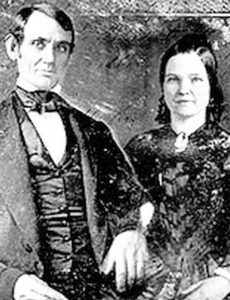 Willie Lincoln was a favorite around the White House. In the words of a government official’s wife, “The White House is sad and still, for its joy and light have fled with little Willie. He was a very bright child, remarkably precocious for his age, and had endeared himself to every one who knew him.” Mary Lincoln’s cousin said he was “noble, beautiful…a counterpart of his father, save that he was handsome.” Mary herself called him the “idolized child, of the household.” It’s somewhat strange to think that such a large household as the White House, with all of it’s staff who work there, could be so changed by the death of a child, but Willie Lincoln was not an ordinary child. Had he been, he might not have come to the attention of everyone in the White House. Most of us know who the first children are but the White House staff knew Willie Lincoln and dearly loved him. As dates in history go, while this little boy was not an important man is the way we think of that today, he had a impact that went far beyond his short time on this earth, and his dying day was one that saddened a nation.
Willie Lincoln was a favorite around the White House. In the words of a government official’s wife, “The White House is sad and still, for its joy and light have fled with little Willie. He was a very bright child, remarkably precocious for his age, and had endeared himself to every one who knew him.” Mary Lincoln’s cousin said he was “noble, beautiful…a counterpart of his father, save that he was handsome.” Mary herself called him the “idolized child, of the household.” It’s somewhat strange to think that such a large household as the White House, with all of it’s staff who work there, could be so changed by the death of a child, but Willie Lincoln was not an ordinary child. Had he been, he might not have come to the attention of everyone in the White House. Most of us know who the first children are but the White House staff knew Willie Lincoln and dearly loved him. As dates in history go, while this little boy was not an important man is the way we think of that today, he had a impact that went far beyond his short time on this earth, and his dying day was one that saddened a nation.

